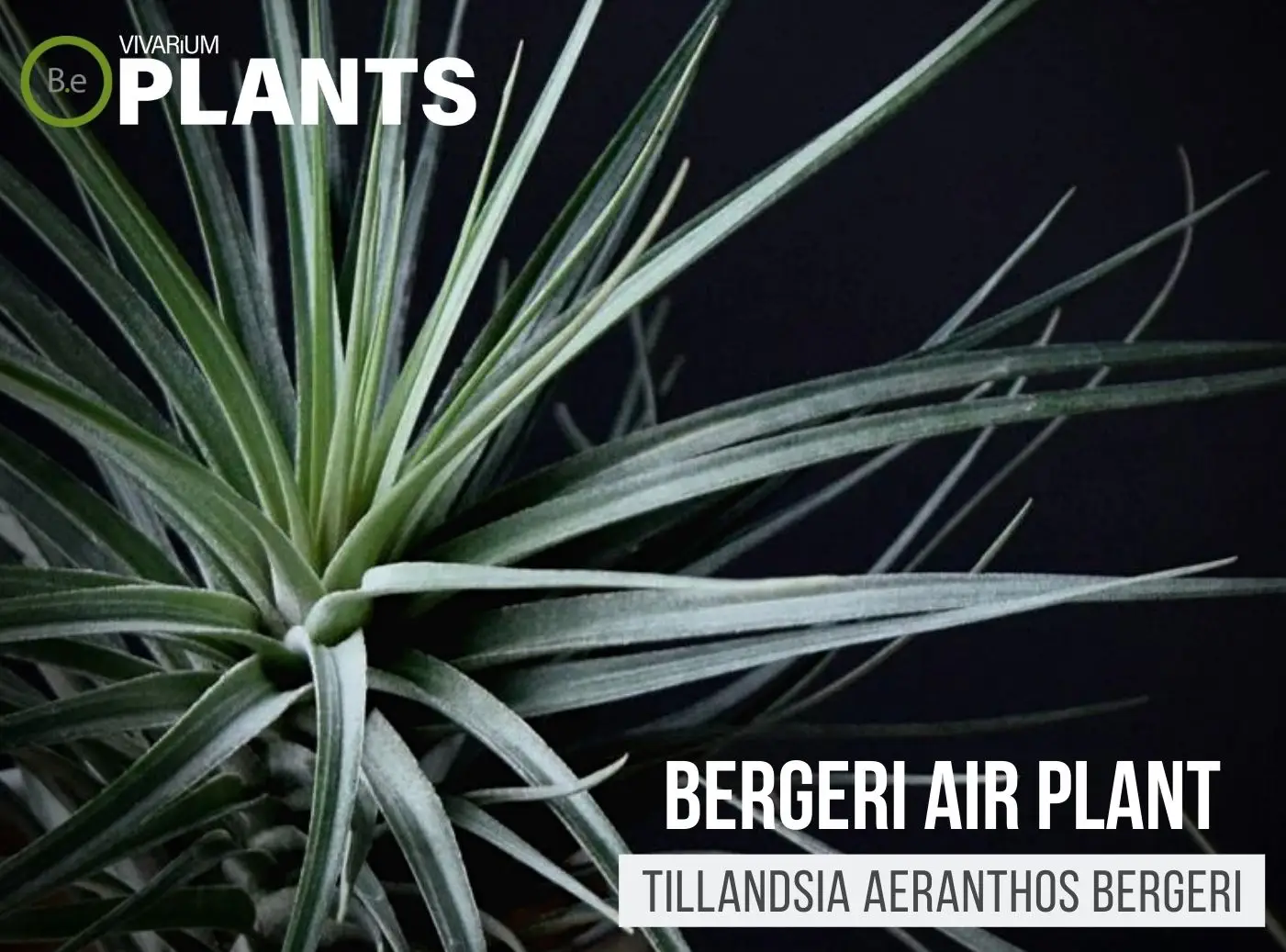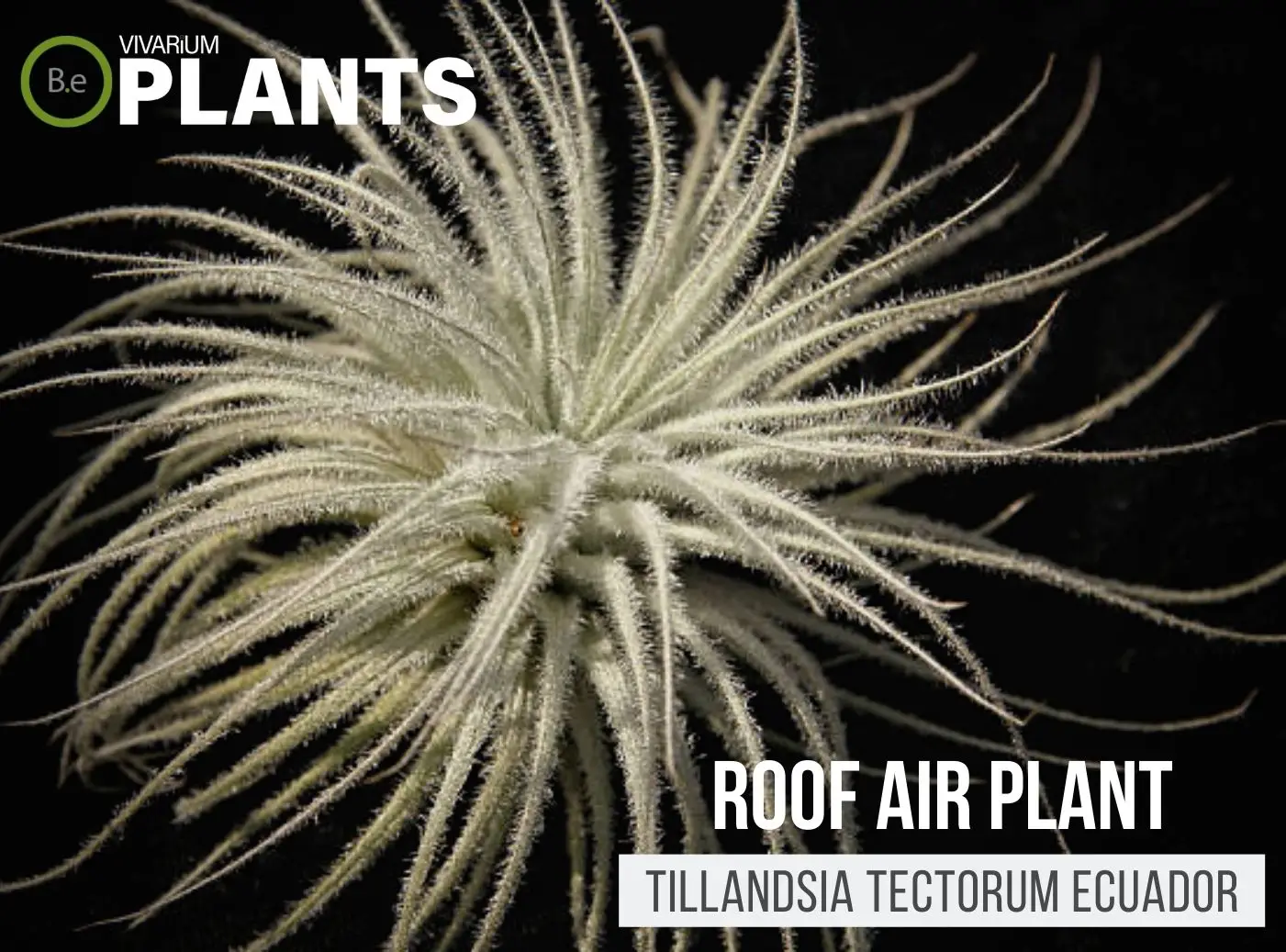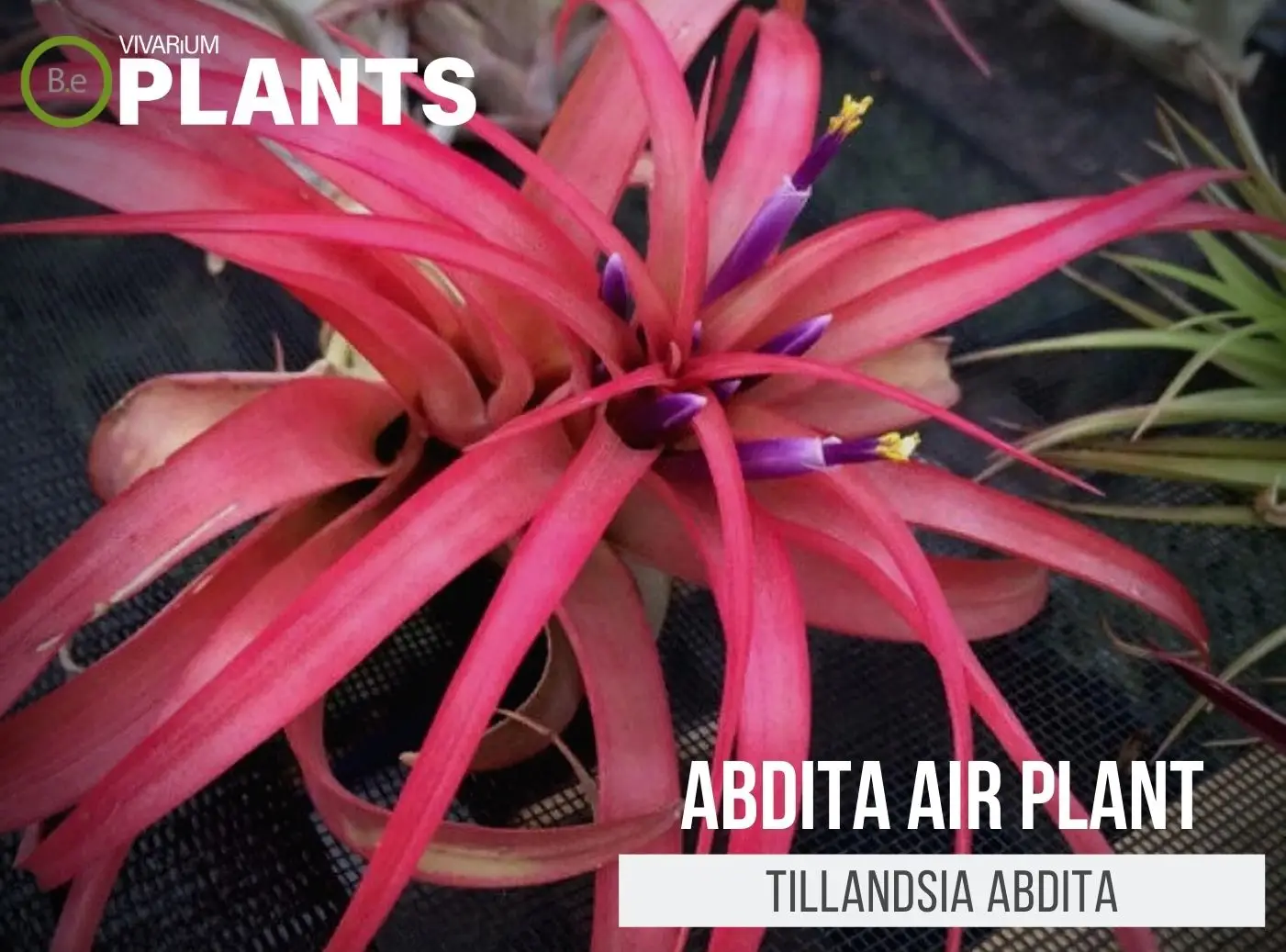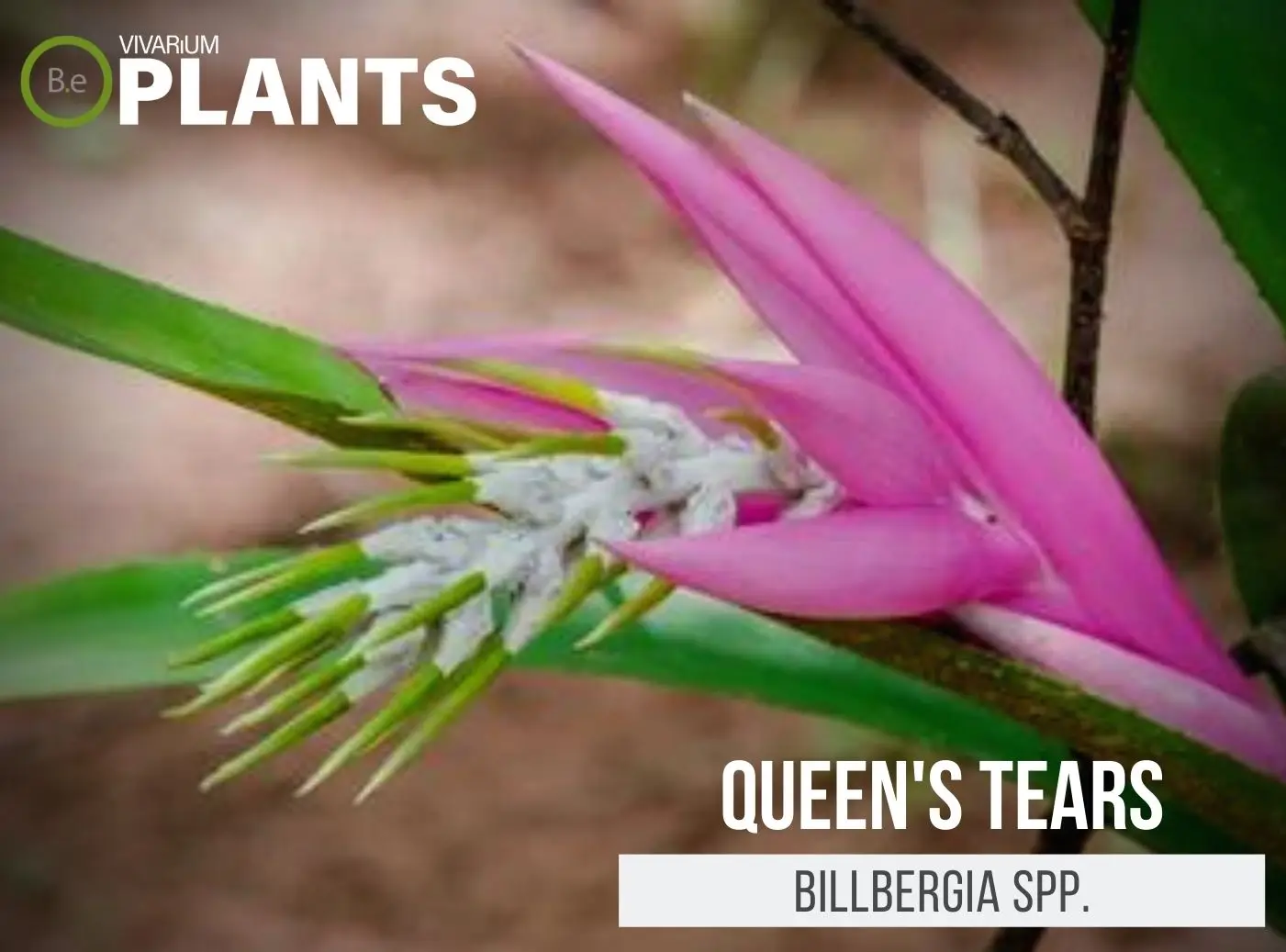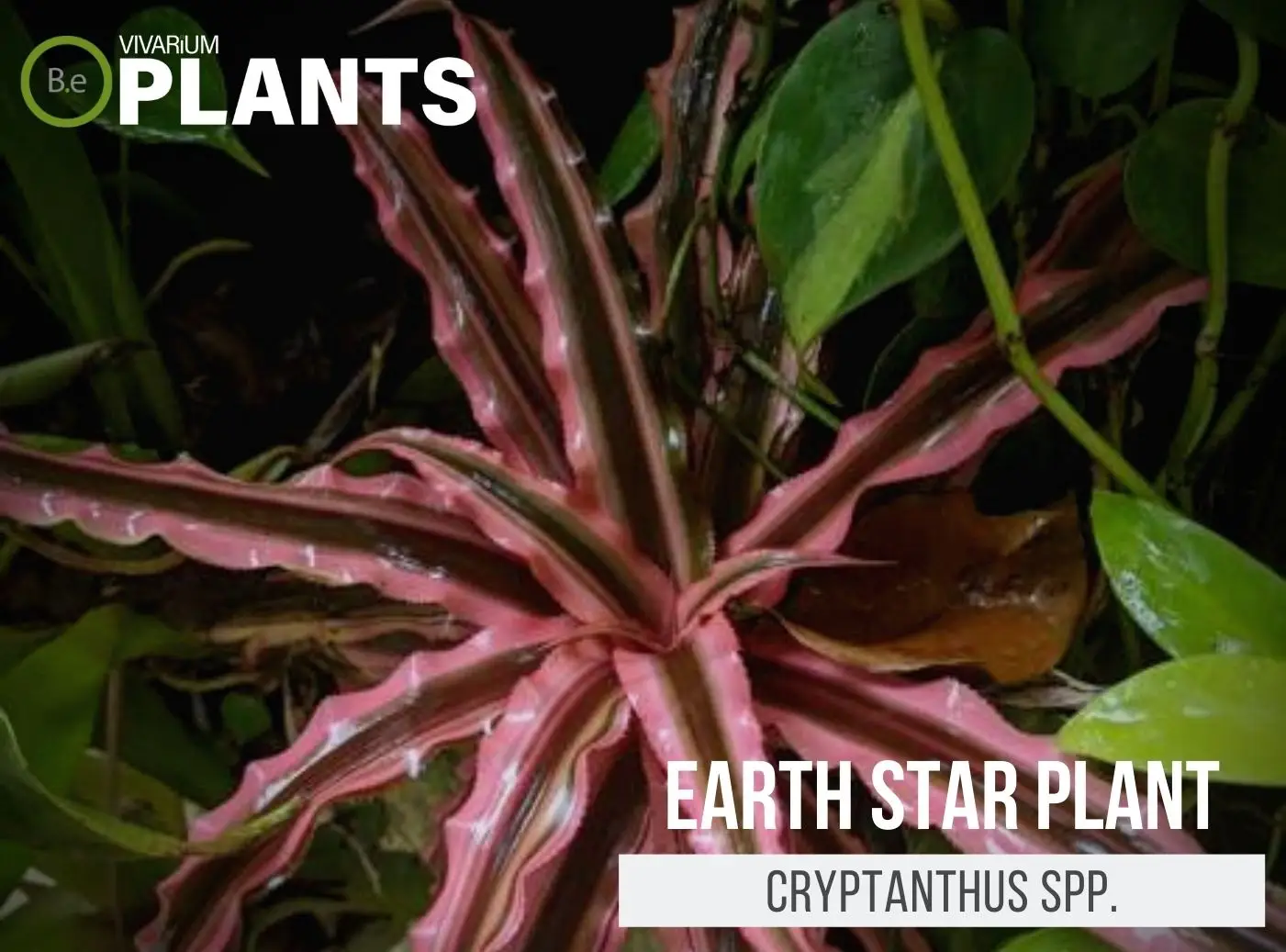Air plants bring a unique touch to any room. Whether they are being used as a stand-alone houseplant or mixed in with other terrarium plants to create a delicate and vibrant terrarium.
Terrarium air plants have an adorable ability to bring a lovely display of color and texture.
If you’re reading this, you’re more than likely aware that these plants are easy to care for, so even those with a busy lifestyle can keep a mini ecosystem going indoors.
Read on to find out the best types of air plants, as well as a guide to making an air plant terrarium and tips for establishing the perfect terrarium air plant.
Table Of Contents:
ToggleWhat Are Air Plants?
Air plants are a type of epiphyte, meaning they grow on other plants or objects.
They are also called Tillandsia because they belong to a plant genus by that name.
Unlike other houseplants, air plants need no soil in order to survive and breathe.
They take in water and nutrients through their leaves and need sunlight and air to grow and thrive.
Air plants are unusual and eye-catching, with a variety of shapes and colors ranging from traditional green to vibrant pink and blue.
Air plants are an attractive and low-maintenance type of houseplant, making them an ideal choice for those with a busy lifestyle.


Benefits Of Terrarium Air Plants
Terrarium air plants can be an ideal choice for those looking to add color, texture, and life to their home or office.
These plants are incredibly easy to maintain and require a minimal amount of time and effort.
They are also a great option for those with a busy lifestyle, as they are able to thrive in environments with limited natural resources.
Additionally, terrarium air plants are inexpensive to set up and maintain, making them an affordable choice for many.
Plus, the combination of air plants and other greenery in a terrarium can add a unique and attractive touch to any interior space.
Best Types Of Terrarium Air Plants
The best types of terrarium air plants are ones that are well-suited to the environment you’re planning to create.
When choosing plants for a terrarium setting, look for ones that thrive in humid conditions and require a minimal amount of light.
Moss, ferns, and even most tropical plants make excellent additions to a terrarium with air plants.
Experiment to find the perfect combination of plants to suit your needs.
Best Tillandsia For Terrariums
Bergeri Air Plant (Tillandsia aeranthos Bergeri)
The Bergeri Air Plant is a popular variety of terrarium air plants due to its adaptability and beautiful appearance.
These plants are well-known for their bright yellow and green hues and fluffy leaves.
They require minimal care and thrive best when exposed to bright, indirect sunlight.
Additionally, the Bergeri Air Plant is an epiphytic variety of Tillandsia.
It has adapted to survive in a variety of terrarium environments as well as on indoor objects, making it a popular choice for terrariums.
This versatility makes the Bergeri Air Plant unique compared to other Tillandsia varieties, as it can be used to create a variety of captivating air plant displays.
Here’s a complete guide on caring for the Bergeri Air Plant (Tillandsia aeranthos Bergeri).
Brachycaulos Air Plant (Tillandsia brachycaulos)
Tillandsia brachycaulos, or Brachycaulos Air Plant, is an attractive and unique species of tillandsia plants well suited to terrariums.
It features a dark green to olive green base, wide grey–green leaves, and unusual curly filaments.
Its inflorescences sport vibrant pink, orange, yellow, and rust–colored blossoms that look stunning when contrasted against its glossy foliage.
Brachycaulos Air Plant grows in clumps and is relatively easy to care for, making it an ideal plant for terrariums and other closed systems.
Its unique curly filaments give it a distinct appearance compared to other tillandsia plants.
This makes it a great choice for those wanting to grow a truly show–stopping air plant.
Here’s a complete guide on caring for the Brachycaulos Air Plant (Tillandsia brachycaulos).
Medusae Air Plant (Tillandsia caput-medusae)
The Medusae Air Plant is an excellent choice for a terrarium air plant.
This visually striking plant has thick, bright green leaves that fan out from its base in a spiral pattern giving it a unique, eye–catching appearance.
It is an epiphyte, meaning it can be placed in soil–free airy environments and still thrive, making it well–suited for terrariums.
It loves bright, indirect sunlight, and can tolerate a wide range of temperatures.
The Medusae Air Plant is especially unique due to its ability to handle drought extremely well by storing water in its leaves.
With proper care, Medusae Air Plants can thrive and bring stunning beauty to terrariums.
Here’s a complete guide on caring for the Medusae Air Plant (Tillandsia caput-medusae).
Roof Air plant (Tillandsia tectorum Ecuador)
Tillandsia tectorum Ecuador, more commonly known as Roof Air Plant, is a popular terrarium air plant variety that adds vibrant pops of color and texture to an indoor garden oasis.
This particular Tillandsia plant features tight rosettes of broad, segmented leaves that range from olive-yellow to almost white in color.
Its textured surface showcases an array of tiny trichomes, or scales, that give the leaves a silvery hue.
Roof Air Plant is unique from other Tillandsia plants in its ability to grow in high-altitude environments, making it an excellent choice for terrarium air plant displays.
With a moderate amount of care, the Roof Air Plant thrives in terrariums and can be kept for many years to come.
Here’s a complete guide on caring for the Roof Air plant (Tillandsia tectorum Ecuador).
Stricta Air Plant (Tillandsia stricta)
Stricta Air Plant is an easy–to–care–for terrarium air plant popular for its extraordinary bloom and distinctive architectural beauty.
It has thick, smooth grey leaves tinged with hues of green and pink, and its rosette shape is unique from other Tillandsia species.
It is an epiphyte, meaning it doesn‘t require soil to grow.
It gets its nutrients from the air and humidity, so it‘s a perfect plant to include in your terrarium just as it is.
Preferring bright, indirect light, Tillandsia stricta is a slow–growing natural wonder that will add texture and excitement to any terrarium.
Here’s a complete guide on caring for the Stricta Air Plant (Tillandsia stricta).
Sky Plant (Tillandsia Ionantha)
Sky Plant is a unique type of terrarium air plant that is ideal for indoor habitats due to its small size and relatively low maintenance.
This bromeliad is recognizable for its vibrant, sky–blue to purple hue, offset with stripes of light green.
Sky Plant is a great choice for terrariums, as it can grow up to five inches tall in a partial to full sun environment.
In addition, its broad, silver–grey leaves are unlike other air plants, contributing to its distinct and aesthetically pleasing look.
Sky Plant thrives in warm, humid environments, and its glossy leaves will even give your terrarium a hint of sparkle when the light catches them.
Here’s a complete guide on caring for the Sky Plant (Tillandsia lonantha).
Bulbous Air Plant (Tillandsia bulbosa)
Bulbous Air Plant is an epiphytic species of bromeliad commonly used in terrarium air plant displays.
It has a unique bulbous base and shiny, silver–green leaves that form an oval shape and curl at the ends.
It produces small purple flowers with an earthy, musty smell.
What sets the bulbous air plant apart from other Tillandsia species is that it is highly resistant to direct sunlight, has decorative displays with bright lighting, and requires less frequent watering.
It is an ideal terrarium air plant, growing beautifully while delighting the senses with its fragrant and colorful blooms.
Here’s a complete guide on caring for the Bulbous Air Plant (Tillandsia bulbosa).
Abdita Air Plant (Tillandsia abdita)
The Abdita Air Plant is a unique type of Tillandsia plant that can be used as a terrarium air plant, displaying unique foliage and a decorative, vibrant green color.
It is known as a clump–forming species, with its leaves growing close together, making it a great choice for busy terrariums.
Abdita Air Plant is low maintenance, typical of all air plants, needing just a misting of water a few times a week.
It also has a unique, distinct fragrance that sets it apart from other species of air plants.
Abdita Air Plant is a durable plant for terrariums and will hold up well even in lower-light environments.
Here’s a complete guide on caring for the Abdita Air Plant (Tillandsia abdita).
King of Air Plants (Tillandsia xerographica)
The King of Air Plants, Tillandsia xerographica, is a unique and beautiful species of Tillandsia.
It has a rosette-like shape, with long curly leaves and silvery grey tones mixed with areas of green and pink.
It is a slow–growing air plant, making it ideal for terrariums as it will take a while before it needs repotting or propagating.
What really sets it apart from other Tillandsias is its long–lasting bloom, which is an eye–catching shade of pink that lasts longer and is brighter than other species.
It is a visually stunning plant that is sure to be the crowning glory of any terrarium.
Here’s a complete guide on caring for the King of Air Plants (Tillandsia xerographica).
Andreana Air Plant (Tillandsia andreana)
Andreana Air Plant is a species of bromeliad that is a popular choice for terrarium air plants.
It features distinctive, silver–grey leaves that grow in an alternating pattern and have a unique, peach underside.
It‘s known for having a relatively slow growth rate and prefers more indirect sunlight when planted in a terrarium.
What makes this tillandsia species unique is its stunning, red–orange flower spike which, when in bloom, is a showstopper and can greatly enhance the overall aesthetic of a terrarium.
With the right growing conditions, Andreana Air Plants can bloom several times throughout their growing cycle, typically every 12–18 months.
Here’s a complete guide on caring for the Andreana Air Plant (Tillandsia andreana).
Best Bromeliads For Terrariums
Tank Bromeliad (Neoregelia spp.)
The Tank Bromeliad (Neoregelia spp.) is a beautiful and versatile air plant that can be used in terrariums.
Its flat rosette shape is usually composed of slender, fused leaves with a splash of colorful flowers in the center.
Tank Bromeliad is unique from other air plants because it can be grown in both clay and glass terrariums.
It prefers moist soil, bright indirect light, and ample humidity to thrive.
When grown in the right environment, these plants produce stunning, silvery leaves with colorful flowers making them an eye–catching addition to any terrarium.
Here’s a complete guide on caring for the Tank Bromeliad (Neoregelia spp.)
Queen’s Tears (Billbergia spp.)
Queen‘s Tears (Billbergia spp.) is a fascinating tillandsia air plant usually found in terrariums and other closed habitats.
It produces clusters of slender, tubular leaves with bright green and yellow hues, adding an exotic quality to its surroundings.
Its flowers have the shape of little sparkly tears coming from the plant‘s bracts, making it an eye-catching addition to any terrarium.
This tropical plant can live between 8–12 months without any soil and is easy to care for with direct light and occasional misting.
In addition, it‘s known as a great air purifier, as its trichomes can absorb dust particles and air pollutants to keep your indoor air clean and healthy.
Queen‘s Tears make for a wonderfully unique addition to your terrarium that you can enjoy for months to come.
Here’s a complete guide on caring for the Queen’s Tears (Billbergia spp.)
Flaming Sword Bromeliad (Vriesea spp.)
The Flaming Sword bromeliad (Vriesea spp.) is a beautiful and unique air plant suitable for terrarium habitats.
It belongs to the Bromeliaceae family and is distinguished by its striking appearance and remarkable ability to store water in the center of the leaves.
The “flaming sword“ is characterized by its deep red center sprout of pedals with brightly colored tips, resembling a fiery, flamboyant blade.
It makes an eye–catching addition to any terrarium with its strong foliage and dense form.
Its leaves are able to absorb moisture from humid air, making it a popular choice for terrariums.
The Flaming Sword Bromeliad is an excellent choice for terrariums because it is low–maintenance, resilient, and adds an interesting texture to the environment.
Here’s a complete guide on caring for the Flaming Sword Bromeliad (Vriesea spp.)
Earth Star Plant (Cryptanthus spp.)
Earth Star Plant (Cryptanthus spp.) is a unique tillandsia plant that is often used in terrariums and air plant habitats.
It stands out from other plants of its kind with its deep green leaves that spread out from its base in a star–like pattern in a rosette shape.
Its leaves are slightly serrated and sometimes feature beautiful variegated splotches of red and pink.
Earth Star Plant is slow–growing yet highly resilient and easy to care for; making it the perfect terrarium air plant.
It prefers moderately low light and humid climates, requiring only occasional watering and fertilization, while still thriving indoors.
Here’s a complete guide on caring for the Earth Star Plant (Cryptanthus spp.)
Silver Vase Plant (Aechmea spp.)
The Silver Vase Plant (Aechmea spp.) is an attractive, air–purifying terrarium air plant.
This eye–catching tillandsia features silvery–green foliage that produces a vase–like shape.
Put several together in a terrarium and watch them slowly grow in all directions for a unique, cascading display.
It is much hardier than other air plants and is perfect for those with less experience caring for them.
This easy–care terrarium plant loves bright light and warm temperatures, however, too much direct sunlight can cause burning.
It is an excellent choice for adding texture and height to terrariums due to its long, spiky leaves.
The Silver Vase Plant’s hardy nature and ability to purify air make it a great option for terrarium air plants.
Here’s a complete guide on caring for the Silver Vase Plant (Aechmea spp.)
How To Make An Air Plant Terrarium
Designing the perfect air plant terrarium can be a fun and rewarding experience.
It all begins with selecting the right container – glass, plastic, or terracotta are all popular choices and they each add their own unique touch to the terrarium.
When it comes to selecting plants, look for those that prefer similar lighting and humidity levels.
For example, if you select an air plant that thrives better in bright, indirect light, then select vivarium plants that have the same lighting preference.
You can also add decorative touches like rocks, driftwood, and terrarium decor to your terrarium for added flair.
Moss and lichens are perfect for creating a natural, forest-like environment.
Orchids and succulents are two other plant options that are a great addition to an air plant terrarium.
Once you have chosen your plants and container, it’s time to assemble the terrarium.
Make sure to research the proper use of soil, light intensity, water, and fertilizers to ensure your plants stay healthy.
Finally, you can use various tools and accessories to make your terrarium come to life.
Place plants in positions that create a balanced, natural look.
Sculptural branches, bark, and driftwood can be used to create a platform for the plants to grow.


How To Care For Terrarium Air Plants
Terrarium air plants are low maintenance and perfect for busy lifestyles.
When caring for terrarium air plants, there are a few guidelines to follow.
First and foremost, terrarium air plants will need a bright location but out of direct sunlight to thrive.
They should be misted twice a week, more often if the terrarium is exposed to high temperatures or low humidity.
It’s also important to ensure that water is draining from the terrarium, as plants can easily become waterlogged.
For fertilizer, use a dilute liquid solution.
Humidity is an important factor for terrarium air plants, so keep the lid on the terrarium most of the time.
If the foliage of the plants becomes dry, you can increase the humidity with regular misting.
As with any plants, terrarium air plants should be regularly inspected for signs of pests or diseases.
Removing dead or dying leaves can help to create a healthier environment.


Common Issues
Air plants can sometimes be prone to environmental issues if not properly set up and maintained.
Poor air circulation and improper light can be common causes of problems with terrarium air plants.
Improper terrarium lighting can cause the leaves to yellow and wither, so starting there would always be my first suggestion when troubleshooting these plants.
Over-watering
In addition, over-watering your terrarium air plants can also cause problems.
Air plants need to be watered at least once a week. Make sure to not over-water them, as this can cause rot, fungus, and root rot.
Make sure to shake off the excess water and let them dry after you water them.
Air Circulation
Finally, make sure to give your air plants ample air circulation.
Air circulation is important to keep your terrarium air plants vibrant and healthy. You can do this by using a fan or by opening up the terrarium lid.
This will help ensure your plants don’t become too stuffy and also reduce the chance of rot and fungus from occurring.
Conclusion
Terrarium air plants are a great choice for home or office decor due to their low maintenance and aesthetically pleasing appearance.
They are easy to care for, require few supplies, and come in a variety of shapes and sizes.
A terrarium air plant can also be a wonderful way to introduce children to plants and gardening, as it is easy to maintain and fun to watch the plants grow and develop.
With the right combination of terrarium plants and decorations, you can create a beautiful tank that will be an eye-catching addition to any room.
Frequently Asked Questions
Yes, air plants are well–suited for terrariums. Air plants typically require bright, indirect light, good air circulation, and regular watering. A well–planned terrarium with the right materials, conditions, and care can provide a perfect environment for thriving air plants.
1. Place an inch or two of gravel at the bottom of your terrarium for drainage.
2. Place your air plants on the gravel.
3. Gently mist your air plants weekly or submerge them in water for 15 minutes once a month.
4. Add moss, stones, or other decorations to the terrarium around the air plants.
5. Enjoy your terrarium of air plants!
1. Place your air plants in a terrarium with indirect, bright light and high humidity.
2. Mist the plants two to three times a week, more often in dry climates.
3. Fertilize your air plants every two to four weeks.
4. Place your terrarium in a spot away from drafts and sources of heat, like air conditioning vents.
5. Ask a local gardening expert for specific advice on terrarium air plant care.
Yes, air plants are well–suited for closed terrariums. They require little maintenance, as the humidity inside the terrarium recirculates and is sufficient for their growth. However, be sure to open the lid of the terrarium and take the air plants out periodically to allow them to receive some direct sunlight.
The frequency of watering your air terrarium depends on several factors such as the size, plants, and environment of your terrarium. Generally, a terrarium should be watered every 1–2 weeks or when the top layer of soil becomes dry.
It depends on the size of the terrarium, but generally, you can put 5–6 air plants in a terrarium.
No, air plants do not need rocks. Air plants need light, humidity, and air circulation to survive, but they do not require rocks to thrive.

